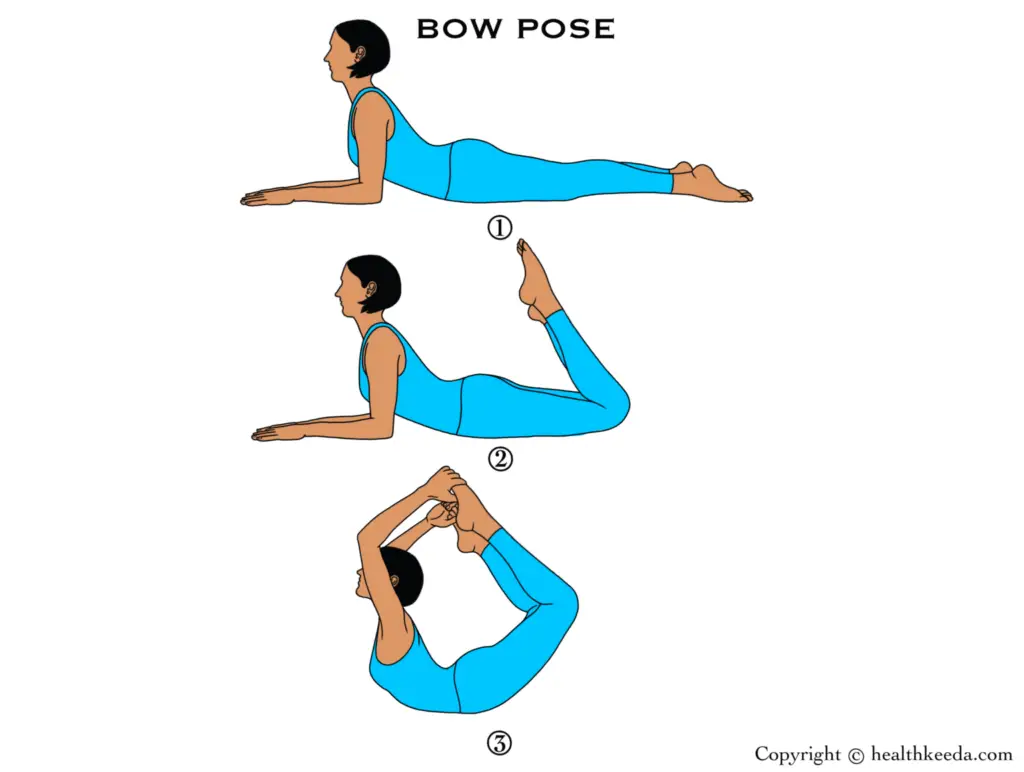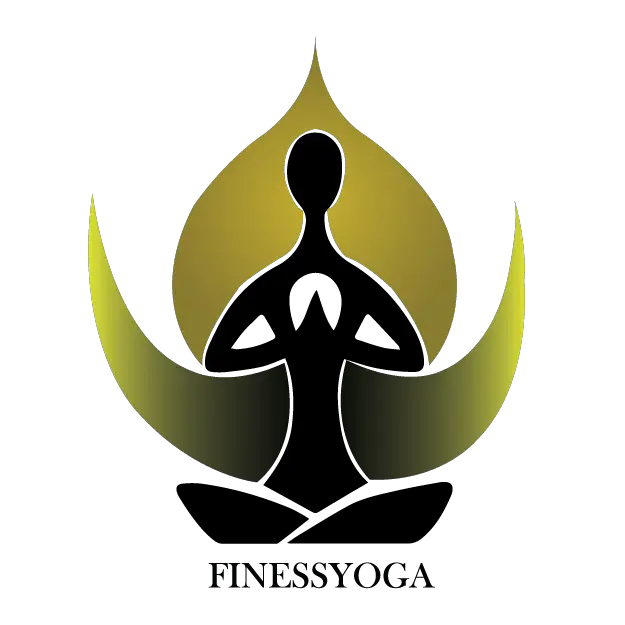Dhanurasana widely known as Bow Pose is a backward bending pose. The Sanskrit name Dhanurasana is derived from two words. The first ‘Dhanu’ means ‘Bow’ and second ‘Asana’ means ‘Posture’. The final position of this asana resembles the shape of a bow and hence the name. It is an excellent pose for the well functioning of all the organs of the body. Along with it there are several other benefits of Dhanurasana.
This pose is most beneficial when performed at a fixed interval and in a suitable condition. Therefore, as a result, avoid performing these yoga poses immediately before or after your regular meals.
With that of the body position, the precise angle of dhanurasana is 45°.
Let’s begin by knowing the steps to practice Dhanurasana

Steps to practice Dhanurasana (Bow Pose)
It is very important to know the right alignment of the body in an asana. Right alignment prevents any kind of injury and helps you attain the maximum benefits of the pose. Here are the steps to practice Dhanurasana correctly:
- Lie on the stomach keeping the feet and legs together. Arms resting by the side of the body.
- Rest the chin on the floor. Hold the ankles with the hands. It is the starting position for this pose.
- Take a deep breath. Tighten the muscles of the legs. Slowly begin to raise the legs along with the head, chin, chest and thighs simultaneously.
- The stomach bears the weight of the whole body entirely. Keep the elbows straight throughout the practice.
- Legs remain contracted in the final position whereas the muscles of back and arms feeling relaxed.
- Retain this position as long as it feels comfortable. When muscles begin to feel tired relax the legs muscles. Slowly bring the head, chin, chest, things and legs back on the floor.
- Come out of the starting position. Relax the whole body and take deep breaths.
Practice 3 times. Practice Dhanurasana(Bow Pose) after Shalabhasana (locust pose) or Bhujangasana (Cobra pose) to get the maximum benefits out of it.
Precautions for Dhanurasana (Bow Pose)
Precautions to keep in mind while practicing Dhanurasana are as:
- Don’t strain the body while raising the legs or the upper part of the body.
- Don’t retain the final position for too long, practice according to your own potential.
- People suffering from any of this condition should avoid practicing this asana: High blood pressure, fragile heart, abdominal ulcer, hernia, migraine, neck injury, pregnancy, frequent headaches or bowel disease.
Benefits of Dhanurasana (Bow Pose)
You can experience health benefits of Dhanurasana gradually with regular practice. Let’s take a look at them.
- Tones and massages the organs of the body therefore leading to their well functioning.
- Liver, kidneys, pancreas, adrenal glands and abdominal organs benefits from Dhanurasana.
- Improves the functioning of excretory process and reproductive system.
- Eases menstrual cramps.
- Strengthens the muscles of back, thighs and legs.
- Stretches spine, muscles and ligaments.
- Improves respiration and circulation of blood.
- Corrects hunched upper back hence improves body posture.
- Beneficial for those who suffer from diabetes and stiffness of muscles.
- Gradually cures the disorders related to stomach.
- Help to get rid of indigestion, constipation. dullness of liver.
Variation of Dhanurasana
1. Bow Pose with a strap
Bow pose with a strap is hard because they cannot approach their feet. This could result from various factors, the most probable of which is the portion of resting humans do.
Using props, particularly a yoga strap is one method for achieving posture. The yoga strap functions as an uplift of the arm. Using such props enables us to perform postures in innovative ways.
2. Upward Facing Bow Pose
Urdhva Dhanurasana, or Upward-Facing Pose Bow Pose, is an energetic backbend that many people might find difficult. This energizing posture expands your air sacs and ribcage. It gives each muscle in the body a decent workout and vitality. Unlike Bow Pose, it is performed by lifting the core skyward rather than putting it on the ground.
Common Mistakes
- While reaching back with your grip, don’t grab the tops of your feet. You might get hurt if your fingers slip and you hit your chin or chest on the ground.
- Stop doing Bow posture right before heading to sleep; it may interfere with your naps.
- If your knees are too parallel together, you may experience back pain.
- Keep your mouth shut.
- If you are in excessive pain, hold back.
- You may seriously harm your shoulder or cause stress if you hurry through the moves.
Stay healthy stay strong and get the best out of life.
Like this post? If yes, then don’t forget to share it with your friends on Facebook, Twitter, and Google Plus!
Here are few hand-picked article you should read :
- Pawanmuktasana (Wind Relieving Pose) steps, precautions & benefits.
- Ashwa Sanchalanasana (Equestrian Pose) steps, benefits & precautions.
- Purvottanasana (Upward Plank Pose) steps, precautions & benefits.
- Marjariasana (Cat Stretch Pose) steps, precautions & benefits.
Feel free to ask and suggest anything in the comment section below.
Thanks for reading. Visit again.
